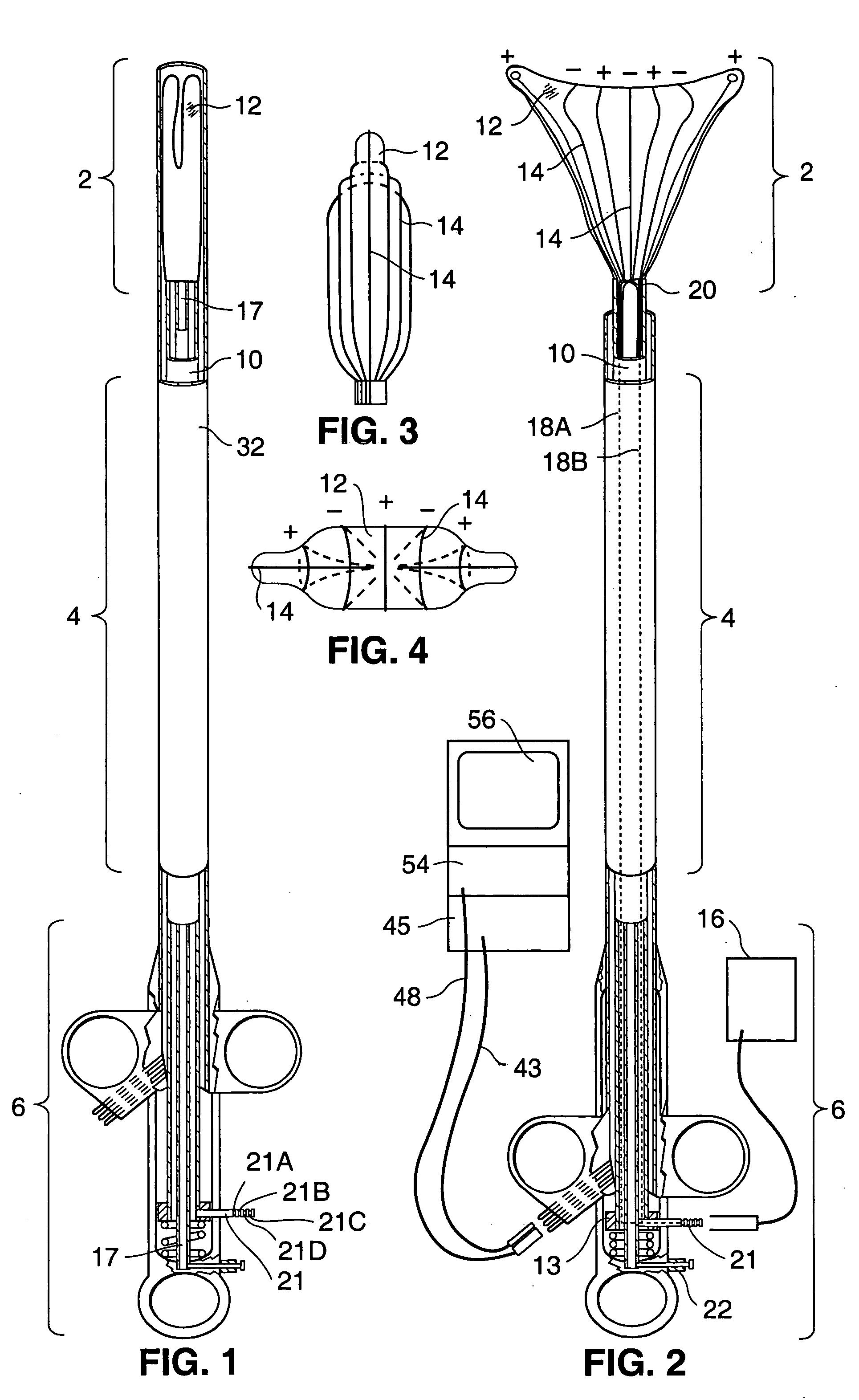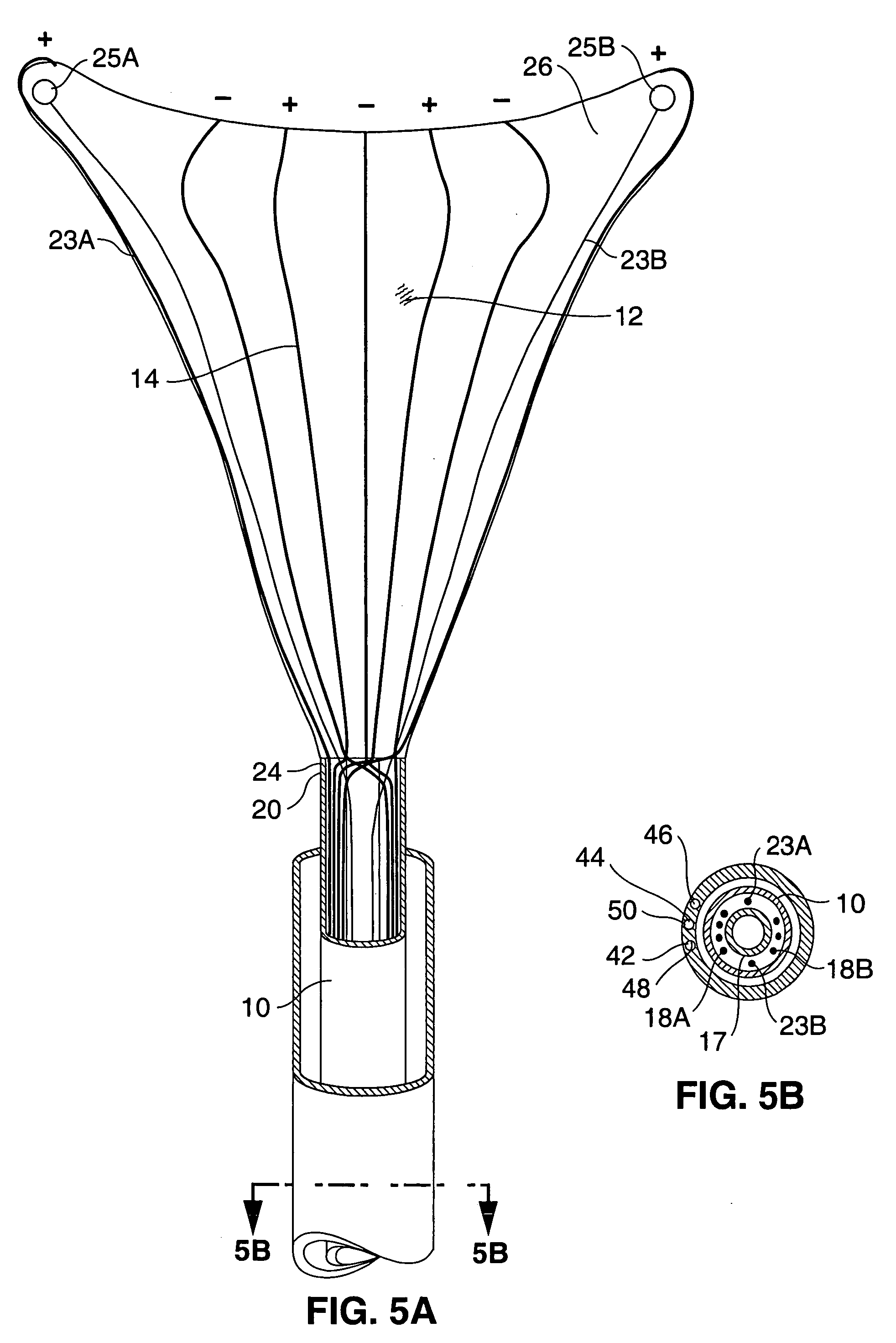Moisture transport system for contact electrocoagulation
a technology of moisture transport and electrocoagulation, which is applied in the direction of prosthesis, contraceptive devices, applications, etc., can solve the problems of ineffective heating process, inability to account for factors, and inability to achieve the ablation depth and ablation profile of such devices by assumption
- Summary
- Abstract
- Description
- Claims
- Application Information
AI Technical Summary
Benefits of technology
Problems solved by technology
Method used
Image
Examples
first exemplary embodiment
[0086] Operation of the first exemplary embodiment of an ablation device according to the present invention will next be described.
[0087] Referring to FIG. 1, the device is initially configured for use by positioning the introducer sheath 32 distally along the shaft 10, such that it compresses the electrode carrying means 12 within its walls.
[0088] At this time, the electrical connector 21 is connected to the RF generator 16, and the fiberoptic cable 48 and the illumination cable 50 are connected to the illumination source, monitor, and camera, 54, 56, 45. The suction / insufflation unit 40 is attached to suction / insufflation port 38 on the handle rail 35. The suction / insufflation unit 40 is preferably set to deliver carbon dioxide at an insufflation pressure of 20-200 mmHg.
[0089] Next, the distal end of the apparatus is inserted through the vaginal opening V and into the uterus U as shown in FIG. 6, until the distal end of the introducer sheath 32 contacts the fundus F of the uter...
second exemplary embodiment
[0155] In preparation for ablating the uterus utilizing the second exemplary embodiment, the user measures the uterine length using a uterine sound device. The user next positions sliding collar 184 (FIG. 32B) adjacent to calibration marks 182 corresponding to the measured uterine length (e.g. 4.5 cm) and rotates the collar section 186 to engage its internally positioned teeth with the rack 180. This locks the longitudinal position of the heel 188 (FIG. 32A) such that it will engage with the spring member 190 when the array has been exposed to the length set by the sliding collar.
[0156] Next, with the grips 142, 144 in their resting positions to keep the applicator head 102 covered by sheath 104, the distal end of the device 100 is inserted into the uterus. Once the distal end of the sheath 104 is within the uterus, grips 142, 144 are squeezed together to deploy the applicator head 102 from sheath 104. Grips 142, 144 are squeezed until heel 188 engages with locking spring member 19...
PUM
 Login to View More
Login to View More Abstract
Description
Claims
Application Information
 Login to View More
Login to View More - R&D
- Intellectual Property
- Life Sciences
- Materials
- Tech Scout
- Unparalleled Data Quality
- Higher Quality Content
- 60% Fewer Hallucinations
Browse by: Latest US Patents, China's latest patents, Technical Efficacy Thesaurus, Application Domain, Technology Topic, Popular Technical Reports.
© 2025 PatSnap. All rights reserved.Legal|Privacy policy|Modern Slavery Act Transparency Statement|Sitemap|About US| Contact US: help@patsnap.com



